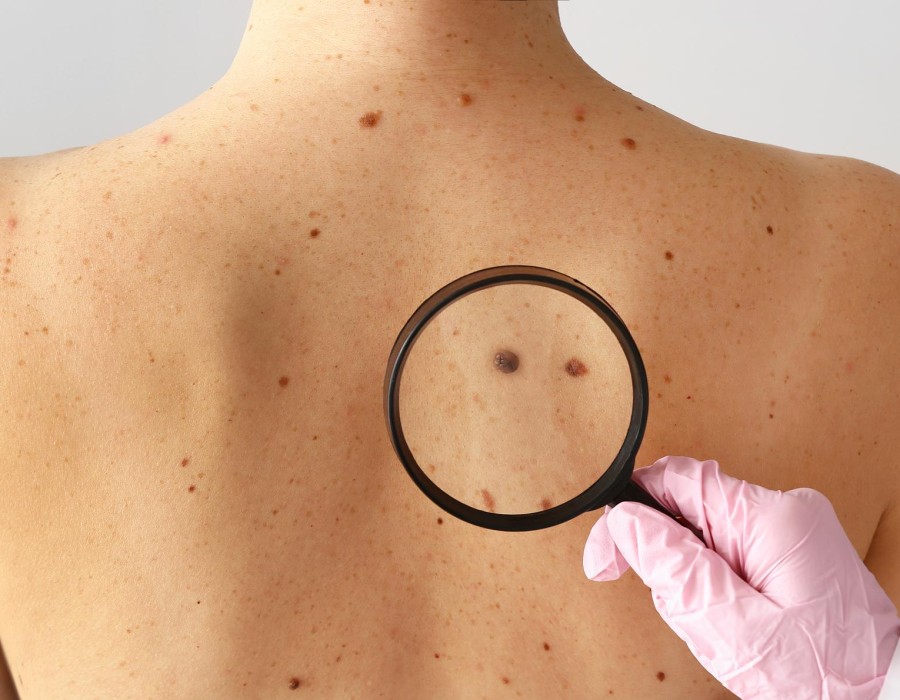Dermoscopy Mole Evaluation in Dubai has revolutionized the way dermatologists evaluate skin lesions, and the advent of digital dermoscopy has further enhanced this technique. Digital dermoscopy combines traditional dermoscopy with digital imaging technology, allowing for more precise documentation, analysis, and follow-up of skin lesions. This article explores the numerous benefits of digital dermoscopy, its applications in clinical practice, and the potential future developments in this field.
Understanding Digital Dermoscopy
Digital dermoscopy involves the use of specialized digital cameras and software to capture high-resolution images of skin lesions. These images can be analyzed, stored, and compared over time, offering significant advantages in monitoring and diagnosing skin conditions.
Components of Digital Dermoscopy
- Digital Dermatoscopes: These devices are equipped with high-resolution cameras that can capture detailed images of skin lesions. They often include features like polarization and varying magnification levels to enhance image quality.
- Image Analysis Software: Many digital dermatoscopes come with integrated software that aids in image analysis and comparison. This software can identify patterns and structures within the lesions, helping dermatologists make more informed decisions.
Advantages of Digital Dermoscopy
Enhanced Documentation and Monitoring
One of the most significant benefits of digital dermoscopy is its ability to document skin lesions over time. High-quality images can be saved and archived, allowing healthcare providers to:
- Track Changes: By comparing images taken during different visits, dermatologists can easily identify changes in size, shape, or color, which may indicate the development of a malignancy.
- Maintain Records: Digital documentation creates a comprehensive record of a patient’s skin history, facilitating better long-term management.
Improved Diagnostic Accuracy
Digital dermoscopy enhances diagnostic accuracy by providing clear, high-resolution images that allow for more precise evaluations. The use of digital imaging enables dermatologists to:
- Analyze Subtle Features: The ability to zoom in on images allows for the observation of subtle dermoscopic features that may not be visible during a traditional examination.
- Utilize Algorithms: Advanced image analysis algorithms can assist in differentiating between benign and malignant lesions, improving diagnostic confidence.
Remote Consultations and Telemedicine
The rise of telemedicine has made digital dermoscopy particularly valuable. Dermatologists can:
- Conduct Remote Assessments: High-quality digital images can be shared with specialists for second opinions or remote evaluations, improving access to care, especially in underserved areas.
- Facilitate Patient Education: Digital images allow healthcare providers to visually explain findings to patients, enhancing understanding and engagement in their own care.
Applications of Digital Dermoscopy
Skin Cancer Screening
Digital dermoscopy plays a critical role in skin cancer screening by enabling thorough evaluations of moles and other skin lesions. The combination of enhanced imaging and the ability to document changes over time allows for:
- Early Detection: The ability to monitor lesions closely improves the chances of detecting skin cancers at an early stage when they are most treatable.
- Tailored Surveillance Plans: Dermatologists can create personalized monitoring strategies based on the individual characteristics of a patient’s lesions.
Research and Clinical Trials
Digital dermoscopy is not only beneficial in clinical practice but also plays a vital role in research and clinical trials. Researchers can:
- Collect Data: High-quality images facilitate data collection and analysis for studies focused on skin cancer detection and treatment.
- Standardize Measurements: Digital imaging allows for standardized measurements of lesions, enhancing the reliability of research findings.
Future Developments in Digital Dermoscopy
As technology continues to evolve, digital dermoscopy is likely to experience significant advancements. Potential future developments may include:
Artificial Intelligence Integration
The integration of artificial intelligence (AI) into digital dermoscopy holds the promise of revolutionizing skin cancer detection. AI algorithms can analyze images, identify patterns, and assist dermatologists in making diagnoses with greater accuracy.
Enhanced Imaging Techniques
Advancements in imaging techniques, such as 3D dermoscopy and multispectral imaging, may provide even more detailed evaluations of skin lesions. These technologies could allow for deeper insights into skin pathology and enhance diagnostic capabilities.
Expanded Accessibility
As digital dermoscopy becomes more widespread, efforts to make this technology accessible to a broader range of healthcare providers and patients are crucial. Increased availability could lead to improved early detection rates and better outcomes for individuals at risk of skin cancer.
Conclusion
Digital dermoscopy represents a significant advancement in the evaluation and monitoring of skin lesions. With its enhanced documentation capabilities, improved diagnostic accuracy, and applications in telemedicine, digital dermoscopy is transforming skin cancer screening and patient care. As technology continues to evolve, the future of digital dermoscopy holds great promise for advancing dermatology and improving patient outcomes in the fight against skin cancer.





Comments